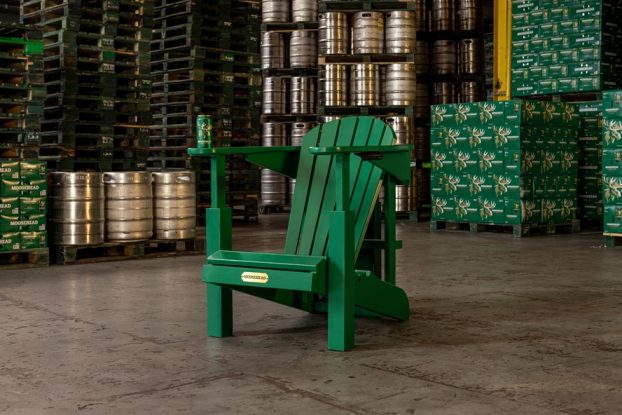It seems hard to believe, given our culture’s obsession with youth, but when Mazda Canada decided to skew its new entry-level Protegé toward younger buyers, there was some serious anxiety about the potential implications.
‘It was a very risky decision to make because we knew we weren’t talking to our whole audience,’ says Greg Young, the Scarborough, Ont.-based automaker’s director of public relations. ‘Were we actually going to lose sales?’
Not at all, as it turned out. Last year, in fact, Protegé ranked ninth on the list of top-selling cars in Canada (16th if you include SUVs, minivans and trucks).
Like many automotive manufacturers, Mazda has recognized the need to begin paying more attention to young, first-time car buyers. Savvier than their parents, but more image-conscious as well, they can prove difficult to win as customers, and even harder to keep. Still, with patience, persistence and – above all – an understanding of their mind-set, it is possible for automakers to secure their loyalty.
Mazda’s first youth-oriented television spot for Protegé (created in 1998 by W.B. Doner in the U.S.) was called ‘Cool World.’ Shot in music-video style with animated backgrounds, it conveyed the notion that the world seems, well, cooler when you’re driving a Protegé. Young says the message appealed to youthful buyers without alienating the older crowd. ‘Youthful thinking cuts across age groups,’ he explains.
Mazda also targeted young buyers directly with advertising on campuses, and posters in the washrooms of bars and restaurants. (Sample washroom ad headline: ‘Goes faster than you do.’)
Since the youth target is known to be Net-savvy, the company incorporated much of the look and feel of the Protegé advertising into its Web site as well. The positioning was also reinforced at the dealer level: Acetate stickers attached to the car windows showed young people with ‘thought balloons’ over their heads to communicate key selling points. (‘New more powerful engine. Now I can leave work that much quicker.’)
Cementing the brand loyalty of young car buyers is a crucial exercise, Young says, because it’s well known that consumers will often move up within a single automaker’s product line as they grow older and more affluent. ‘Obviously we want people to stay within our brand and within our family of products,’ he says.
Today’s young people, however, are tougher to cultivate as customers than their counterparts of a generation ago. ‘They’re a lot more marketing-savvy than their parents,’ says Pearl Davies, Chrysler brand manager for Windsor, Ont.-based DaimlerChrysler Canada. ‘They know when they’re being targeted.’
That’s not to say that brands can’t form bonds with them – it’s just that the process demands a little more creativity than it used to. ‘We have to be innovative with the messages we deliver and the types of communications we use for them,’ Davies says.
That accounts for DaimlerChrysler’s experimentation with street-level advertising this past fall. To promote its new PT Cruiser, scheduled for launch later this year, the company ran a six-week teaser campaign in the Montreal, Toronto and Vancouver markets. The campaign employed billboards and wild postings featuring a shot of the Cruiser – which has a distinctively retro profile – and a 1-877 number.
The launch of the PT Cruiser is a clear attempt to appeal to the changing sensibilities of today’s young first-time buyers.
DaimlerChrysler’s Neon, first introduced in 1994, also targets the younger crowd. But it was launched as a basic entry-level vehicle, without bells and whistles. And despite recent efforts to spruce up its image, it continues to be perceived as such. Something more distinctive – and, frankly, a little more like an import in its styling – was needed to capture the imagination of image-conscious young buyers.
Enter the PT Cruiser, whose unusual look is intended to make ‘a bold statement,’ Davies says.
‘The younger consumer is looking to define their brand differently than their parents did,’ she explains. ‘We want to come out with exciting products to let them know that we’re exciting, and that we’re willing to do things a little differently.’
Auto manufacturers should never underestimate the importance of the first-time buyer, Davies adds. ‘Sometimes, when they first [enter the market], they’re not quite a profitable customer – but once you grow brand affinity and brand loyalties, you have them forever.’
Over at Ford Motor Company of Canada in Oakville, Ont, there’s a slightly different perspective on young consumers. ‘We don’t approach youth as a niche market,’ says Norm Melamed, senior vice-president, client services with Ford’s Toronto-based agency, Young & Rubicam. ‘They’re just a natural core target to bring into the Ford family.’
Consider the Ford Focus. While young buyers are a key target for this new vehicle, they’re by no means the only target. The Focus is available in several models, including a four-door sedan designed to appeal to families and older buyers.
Advertising for the Focus plays on the idea that many things in life will disappoint – but this car won’t. That, says Melamed, is a message that appeals to a younger buyer, but won’t leave out an older one.
The TV campaign includes spots aimed at different demographics. One, for example, shows a young man hunting for an apartment. (The dismal options leave him disappointed, but as he climbs into his comfortable, roomy Focus, his mood improves.) The spot for the Focus sedan, by contrast, features an older couple at the opera.
Melamed agrees that young buyers now tend to be more alert to marketing tricks – but when push comes to shove, he says, there’s no real difference between the mind-set of today’s first-time car buyer and that of her counterpart a generation ago. ‘Everybody would like to buy an attractive car at an affordable price,’ he says.
‘They want all the bells and whistles, but at an affordable price,’ affirms Jim Miller, senior vice-president of corporate affairs with Scarborough, Ont.-based Honda Canada.
Young first-time buyers do indeed care a great deal about styling, he adds – but they also buy for value. And value, to them, isn’t just about price. It’s also a function of vehicle longevity, maintenance costs, and so on.
Miller says Honda began to realize about three years ago that the needs and desires of younger buyers are changing. That’s particularly true when it comes to the experience at the dealer level – which is one of the reasons the company recently introduced a new training program to educate dealers about the evolving customer mind-set.
‘These are customers whose time is very important to them, whose expectations are higher, who don’t like the negotiation process and who are more educated when they come into the showroom,’ he says. ‘They’re more demanding.’
Honda is one of the few automotive manufacturers in Canada without a Web site of its own – but that will change soon. It’s essential for an automaker to have an online presence, Miller says, because many prospective young buyers do their research on the Internet. ‘They usually come in with either a picture or a brochure that they’ve pulled off the Internet and say, ‘This is what I’m looking for.”
‘If you’re a first-time car buyer, you don’t want to compromise,’ says Glenn Paterson, vice-president, group account director with Honda’s Toronto-based agency, Ambrose Carr Linton Carroll.
While the target for Honda’s Civic has always skewed younger, Paterson says the company hasn’t tried to cultivate the hip, edgy brand image that many competitors go for when targeting the young first-time buyer.
‘You’re not going to see any wild postings for the current-generation Civic,’ he says. Instead, the brand’s advertising focuses on reliability issues, and the simple, universal notion of having fun.
Also in this report:
– Dealer campaign drives different route p.36


























